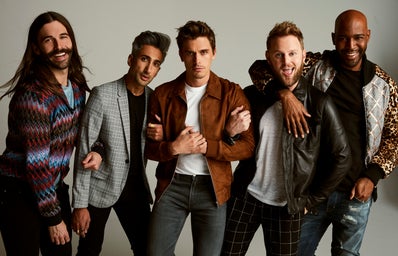I’ve seen a lot of Queer Eye critiques and slander since the newest season debuted in December. These tend to be very valid critiques from members of the LGBTQ+ community about who the show is for and who it serves. Oftentimes the argument is that the show panders to a straight and cis audience. Although I definitely understand this point of view, as a member of the community myself I have a somewhat different opinion. To me, Queer Eye has become a comfort as something I can share with my non-queer friends while also bringing to light issues I and other members of the community face in a light and fun way.
The first thing that really drew me to the show was its light and fun nature. There is already a decent amount of important media centered around the struggles of queer people: the anxiety involved with coming out, the restriction of the closet and the rejection from loved ones that we experience, just to name a few. However, when this is the only sort of media being created about the queer experience, it can be sort of depressing for those of us who want to see a more lighthearted kind of representation. This is where Queer Eye comes in: a feel-good show about five unique queer people who use their talents to help others. For me, this show’s funny, sweet and uplifting nature showcases the joy that comes with being queer, and when the more serious topics that they’ve discussed come up—such as race, identity, acceptance and belonging—they are always handled with the utmost grace.
Another thing I love about Queer Eye is the way it seems to spark real change, even on just an individual basis. The show often gets flack because the members of the group will sometimes have to justify their identity to people who are either ignorant or unaware, which makes sense, but I see it a little differently. The way I understand it, members of the fab five offer themselves up for examination so that other queer people don’t have to—and they themselves often learn new things about their own community in the process. For example, in one episode fashion aficionado Tan France learns about the trans experience from one of the heroes, Skyler. He expresses that he “[felt] f*cking stupid, to be quite honest,” and that he “truly didn’t understand” what it meant to be trans. His thoughtful questions and transparency, paired with Skyler’s patience, created a really beautiful moment that can serve as a template for what a respectful conversation with someone who is different from you might look like.
Something else that Queer Eye has managed to successfully cultivate is a sense of diversity that was not necessarily a part of its mother show Queer Eye for the Straight Guy. The original show’s premise went something like this: the clueless straight man who can’t fend for himself is saved by a group of mostly white gay men who give him a makeover and teach him how to have good taste. Conversely, our generation’s Queer Eye has expanded in a really amazing way. For one, the people they help are no longer only straight men. The show has welcomed heroes of all genders, races, sexualities and abilities. Therefore it ends up highlighting the issues of marginalized groups other than just the queer community and often demonstrates how those struggles may intersect with nuance. Also, the fab five is more diverse than it used to be as a group, which allows for more intersectional conversations to take place.
It has also become much more than just a makeover show. The show’s main goals are now usually catered to the individual hero on a case-by-case basis. Their work ranges from simply helping a lazy person become motivated to assisting in someone moving forward in their life while dealing with immense grief. Sometimes one member of the fives’ job stands out in particular because of this—for example, Bobby’s importance in building a huge barn for a woman with a job rescuing animals who desperately needs it in this season, and Karamo’s importance in providing a black lesbian woman with access to a dance studio for her to feel in touch with her womanhood back in season three.
All in all, I think Queer Eye does an incredible amount of good not only for the Queer community but for a multitude of oppressed voices. It also does so in a fashion that is comforting and centered in positivity which is something we don’t see very often. After all, if we’re going to be having hard, perspective-changing conversations that challenge the status quo, what’s wrong with having fun while doing it?


